From bestselling novels to unpublished manuscripts, what is the secret to literary success?
news.northeastern.edu – Thursday August 22, 2024

You might think releasing 20 books — including four American Girl books — carries some weight in the publishing world. Yet, Kathryn Reiss still has four books, including a thriller for adults, in her repertoire that remain unpublished.
Reiss, an associate teaching professor in creative writing at Northeastern University’s Oakland campus, has made her name writing suspense novels for kids and teens; she published her first novel, “Time Windows,” in 1991 after writing it while on a Fulbright Scholarship in Germany. But she’s bumped up against a wall when trying to branch outside her niche.
“(Publishers) have to think they can market it,” Reiss said. “So if I want to do an adult book, or if I want to do some literary fiction that’s not a typical Kathryn Reiss suspense novel … they go ‘Well, how will we market that?’ You almost get stuck.”
Creative writing is an art, but writers face the same problem many artists do: how they can create something they like that people will also want to buy. Like any other business, book publishers want to sell a good product that they can easily market, Reiss said. But this makes it hard for writers to break out of their shell, if they can even break into the industry at all.
“For a new writer, you have to prove to them you have a very marketable book,” Reiss said. “What people don’t understand is once you’ve had a book published, it doesn’t mean you’re a shoo-in for your next book. It means your publisher will look at your next book.
“You have a one-up on someone who hasn’t published anything, but it isn’t a given. They have to think they can market it. … Publishers are really about making money. They care about their readers, but they want to sell books at the end of the day. That’s what they’re in the business to do.”
To read the full article on news.northeastern.edu, click here




 How I got a literary agent - An interview with author, Charles Heaton Allen
How I got a literary agent - An interview with author, Charles Heaton Allen How I got a literary agent - An interview with author, Graham Soloman
How I got a literary agent - An interview with author, Graham Soloman How I got a literary agent - An interview with author, Eric Houghton
How I got a literary agent - An interview with author, Eric Houghton How I got a literary agent - An interview with author Rob Riley
How I got a literary agent - An interview with author Rob Riley Avoiding literary agency scams
Avoiding literary agency scams Seven essential points on literary agents
Seven essential points on literary agents How I got a literary agent - An interview with author James R. Larson
How I got a literary agent - An interview with author James R. Larson How I got a literary agent - An interview with author Adrienne Schwartz
How I got a literary agent - An interview with author Adrienne Schwartz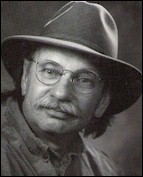 How I got a literary agent - An interview with author David C. Burton
How I got a literary agent - An interview with author David C. Burton How I got a literary agent - An interview with author, Robert W. Morgan
How I got a literary agent - An interview with author, Robert W. Morgan How I got a literary agent - An interview with author Geri Spieler
How I got a literary agent - An interview with author Geri Spieler It is easier to win major literary awards by writing a lead character who is a man, Booker Prize-winning authors warn
It is easier to win major literary awards by writing a lead character who is a man, Booker Prize-winning authors warn Dollars, Cents, and Being Left With the Bill: Jillian Medoff on Breaking Up With Her Literary Agent
Dollars, Cents, and Being Left With the Bill: Jillian Medoff on Breaking Up With Her Literary Agent Q & A with Literary Agent Vanessa
Q & A with Literary Agent Vanessa The sure-fire way to getting your book published, according to one of UK’s top literary agents
The sure-fire way to getting your book published, according to one of UK’s top literary agents Verse & Vision: Interview with Mark Gottlieb, Leading Literary Agent
Verse & Vision: Interview with Mark Gottlieb, Leading Literary Agent New Literary Agency Listing: DunnFogg
New Literary Agency Listing: DunnFogg 'New romance,' a growing literary genre and gold mine for publishers
'New romance,' a growing literary genre and gold mine for publishers Akoya Publishing launches with slate of 10 books for 2026
Akoya Publishing launches with slate of 10 books for 2026 AAP StatShot: US Industry Was up 18.1 Percent for Month of July
AAP StatShot: US Industry Was up 18.1 Percent for Month of July New Literary Agent Listing: Isabel Lineberry
New Literary Agent Listing: Isabel Lineberry Watson, Little appoints Gabrielle Demblon as foreign rights manager and literary agent
Watson, Little appoints Gabrielle Demblon as foreign rights manager and literary agent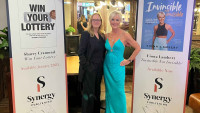 Mother and son Suzi Wooldridge and Cameron Toman launch Synergy Publishing
Mother and son Suzi Wooldridge and Cameron Toman launch Synergy Publishing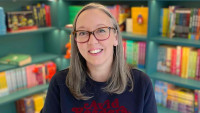 The Bent Agency's Gemma Cooper launches Gemma Cooper Literary
The Bent Agency's Gemma Cooper launches Gemma Cooper Literary Les Nouveaux Editeurs announces creation of first publishing house
Les Nouveaux Editeurs announces creation of first publishing house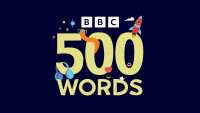 BBC 500 Words creative writing competition returns for children across the UK
BBC 500 Words creative writing competition returns for children across the UK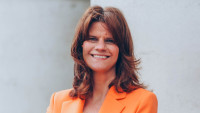 Emma Layfield launches Children’s Books North Agency in Manchester
Emma Layfield launches Children’s Books North Agency in Manchester Felicity Bryan Associates hires agent James Gill
Felicity Bryan Associates hires agent James Gill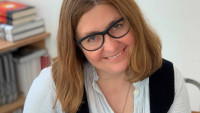 Eleanor Birne joins RCW as literary agent
Eleanor Birne joins RCW as literary agent New Magazine Listing: Riposte
New Magazine Listing: Riposte Literary festival aims to inspire young writers
Literary festival aims to inspire young writers
